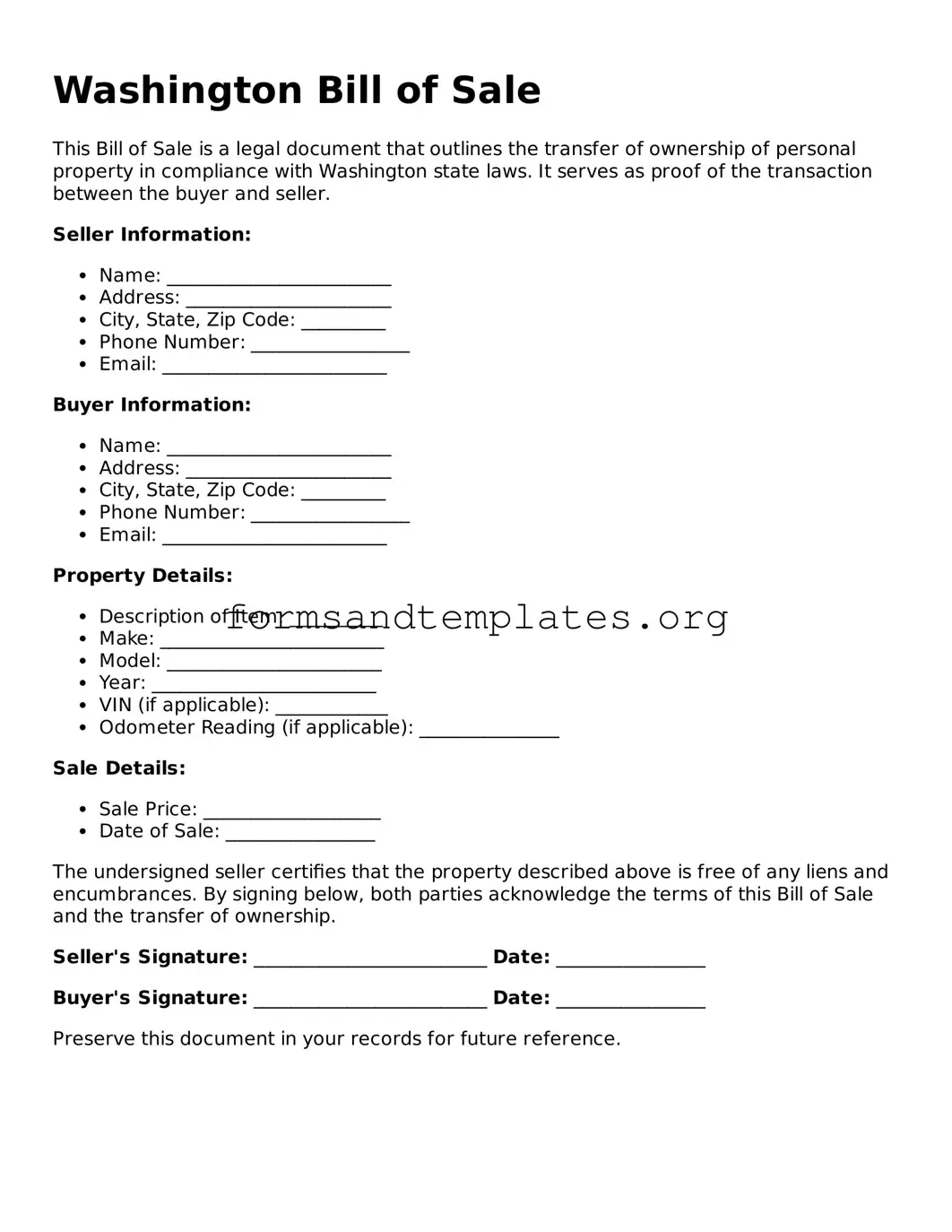Washington Bill of Sale
This Bill of Sale is a legal document that outlines the transfer of ownership of personal property in compliance with Washington state laws. It serves as proof of the transaction between the buyer and seller.
Seller Information:
- Name: ________________________
- Address: ______________________
- City, State, Zip Code: _________
- Phone Number: _________________
- Email: ________________________
Buyer Information:
- Name: ________________________
- Address: ______________________
- City, State, Zip Code: _________
- Phone Number: _________________
- Email: ________________________
Property Details:
- Description of Item: __________
- Make: ________________________
- Model: _______________________
- Year: ________________________
- VIN (if applicable): ____________
- Odometer Reading (if applicable): _______________
Sale Details:
- Sale Price: ___________________
- Date of Sale: ________________
The undersigned seller certifies that the property described above is free of any liens and encumbrances. By signing below, both parties acknowledge the terms of this Bill of Sale and the transfer of ownership.
Seller's Signature: _________________________ Date: ________________
Buyer's Signature: _________________________ Date: ________________
Preserve this document in your records for future reference.
